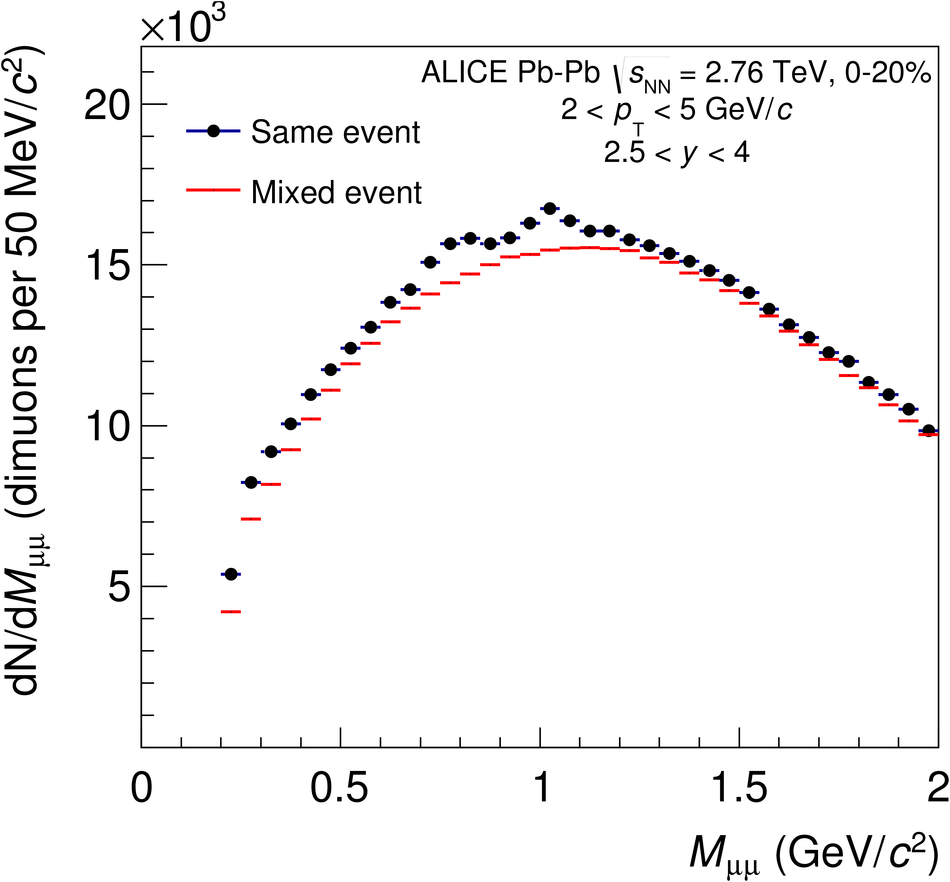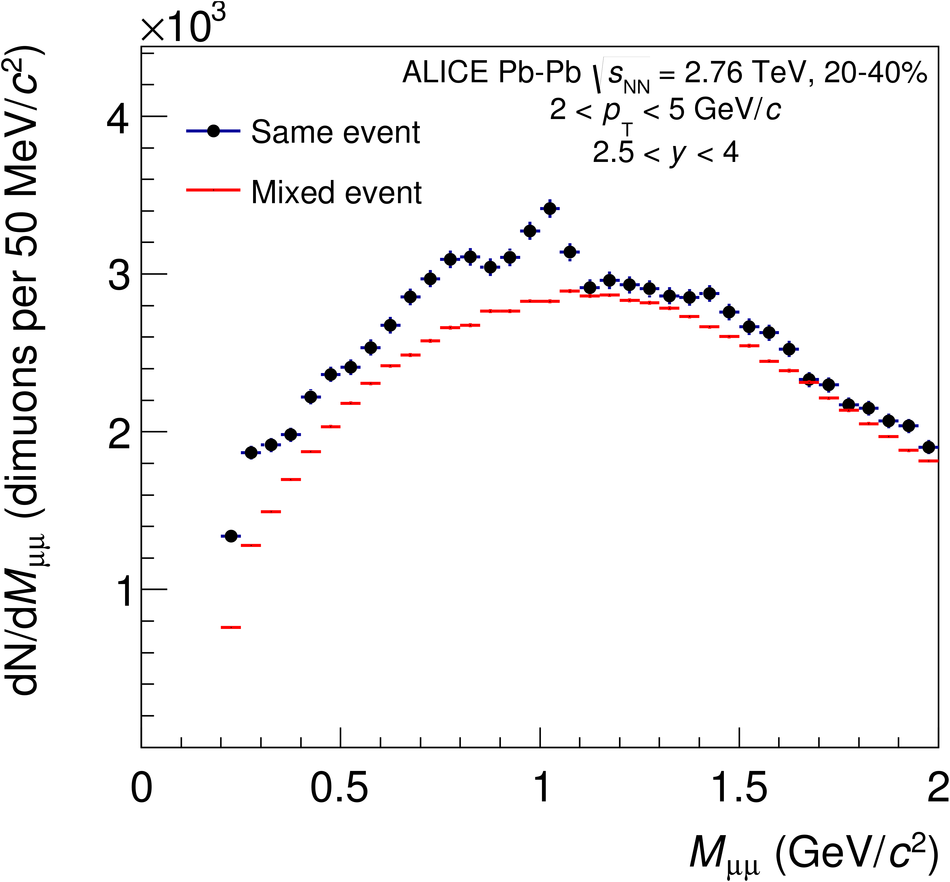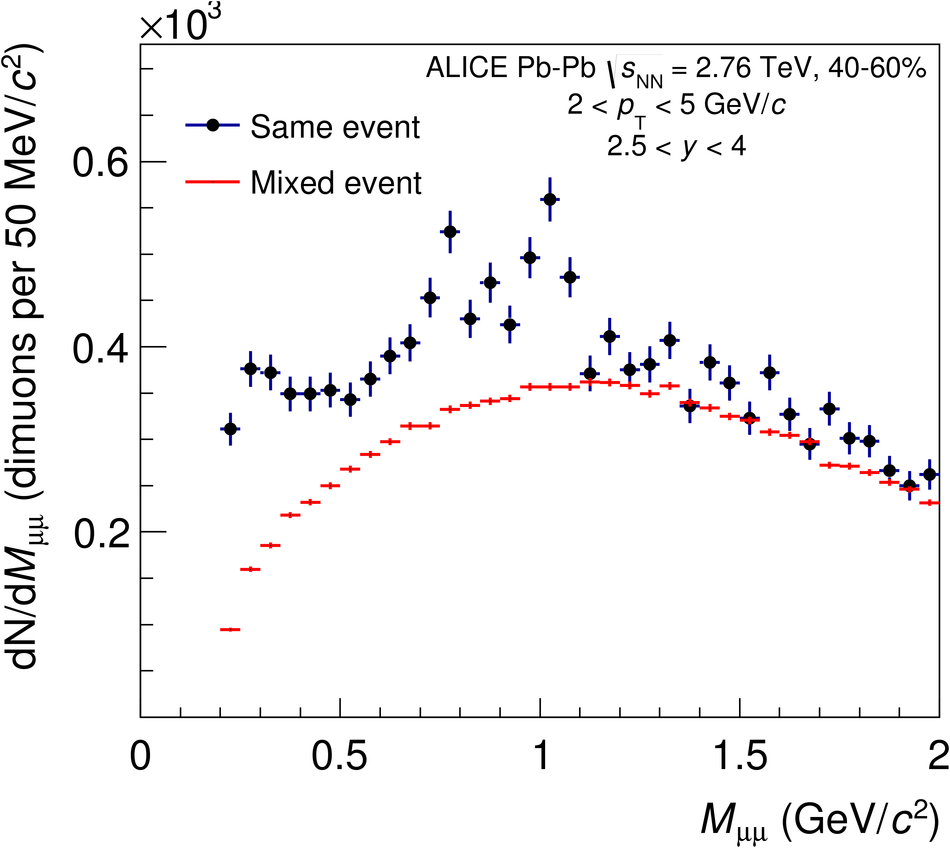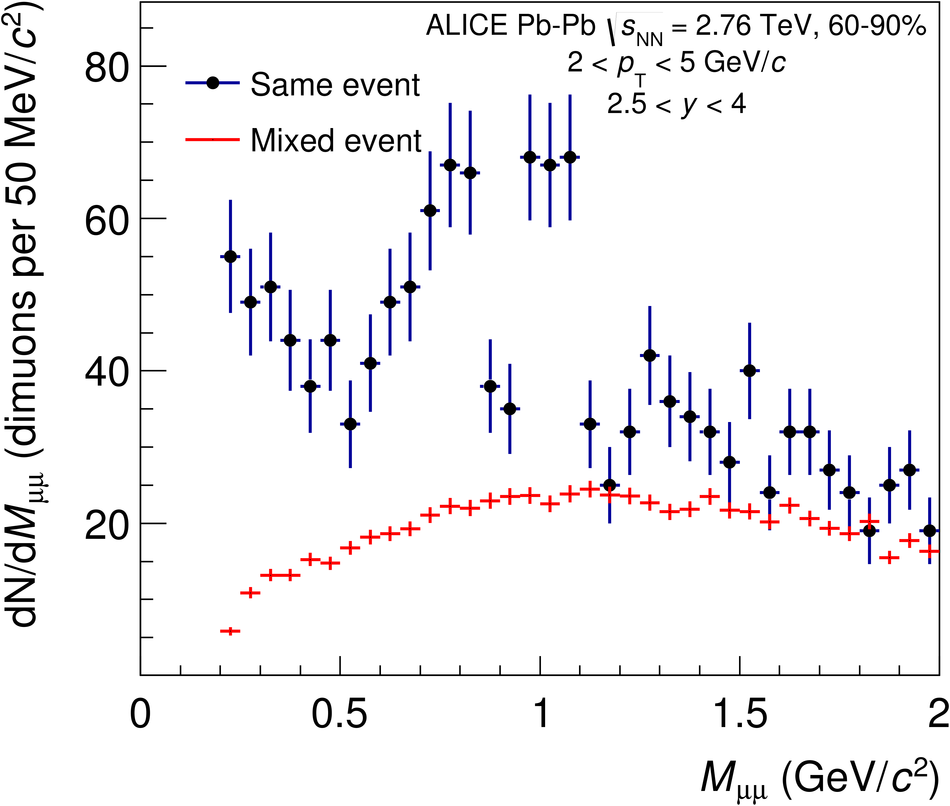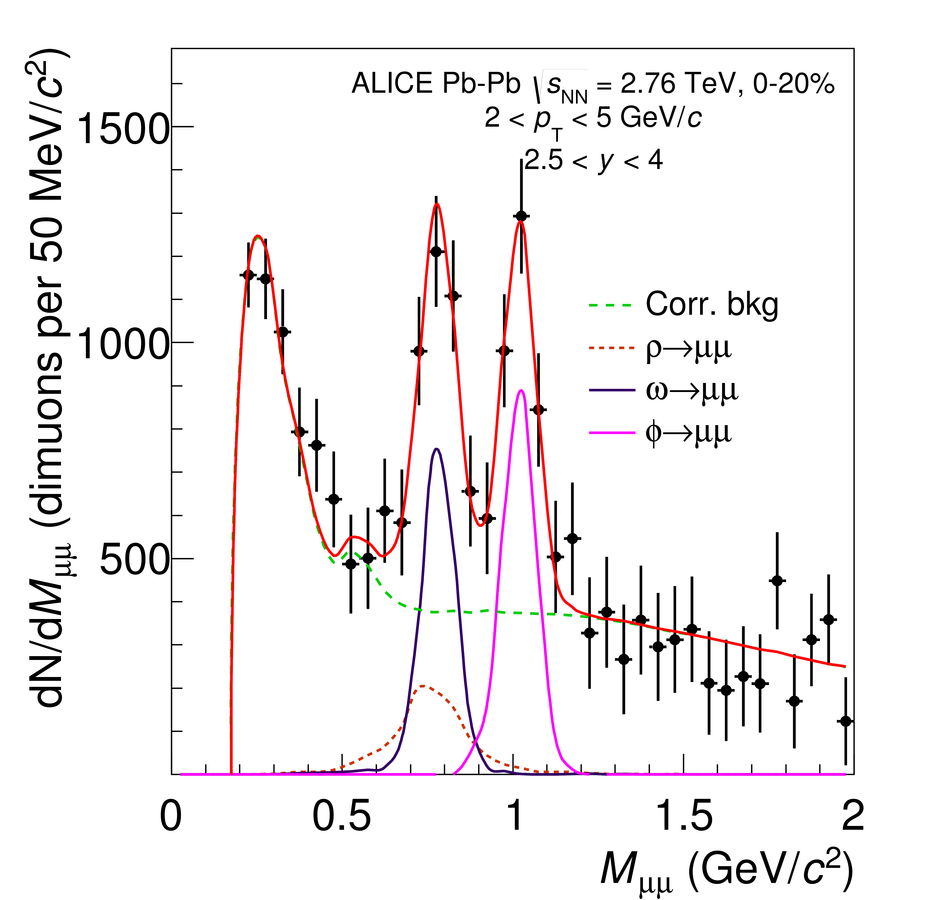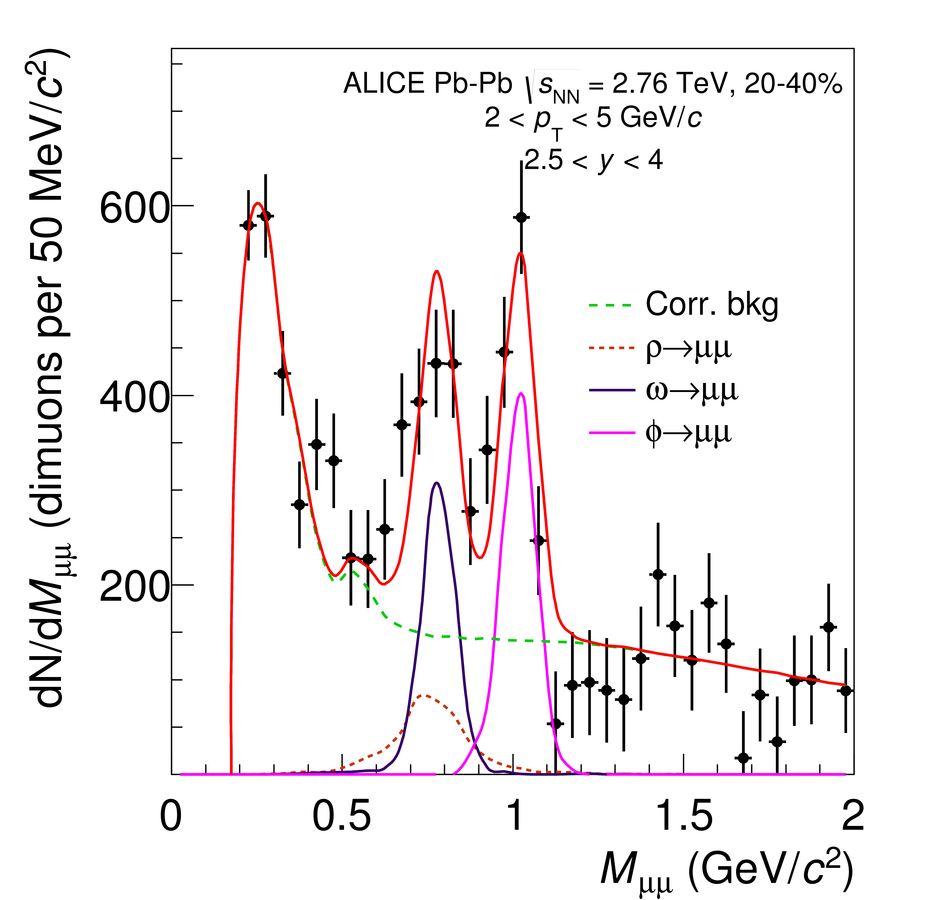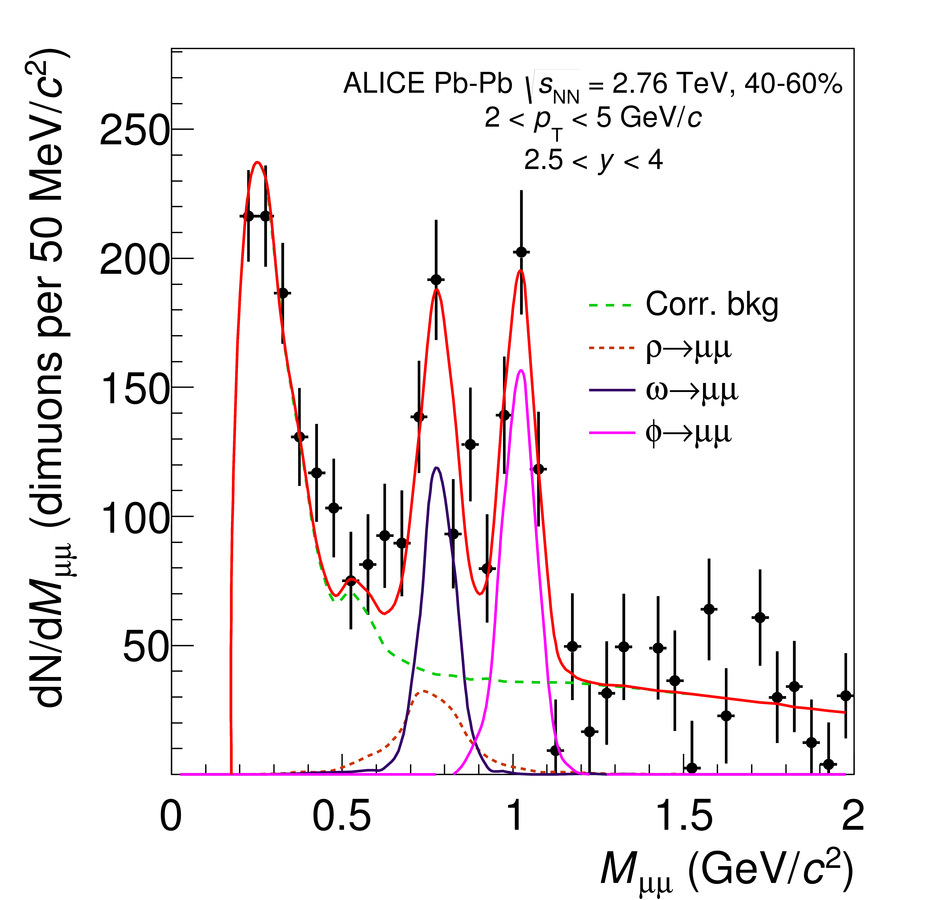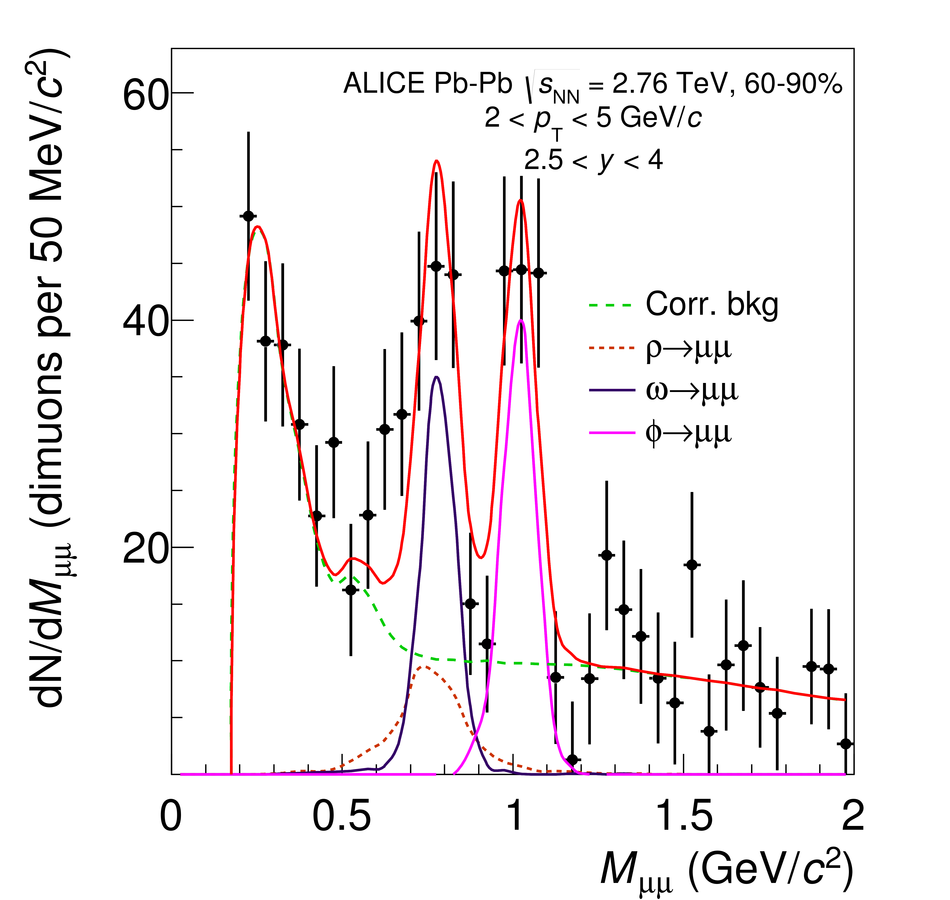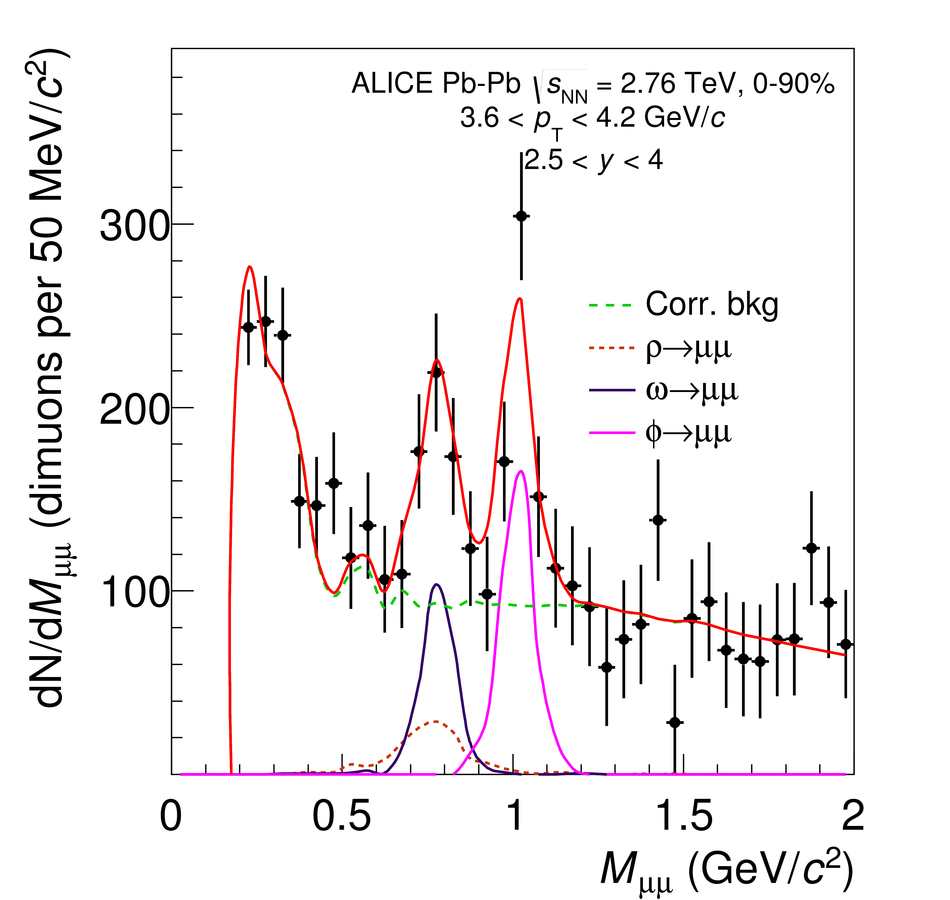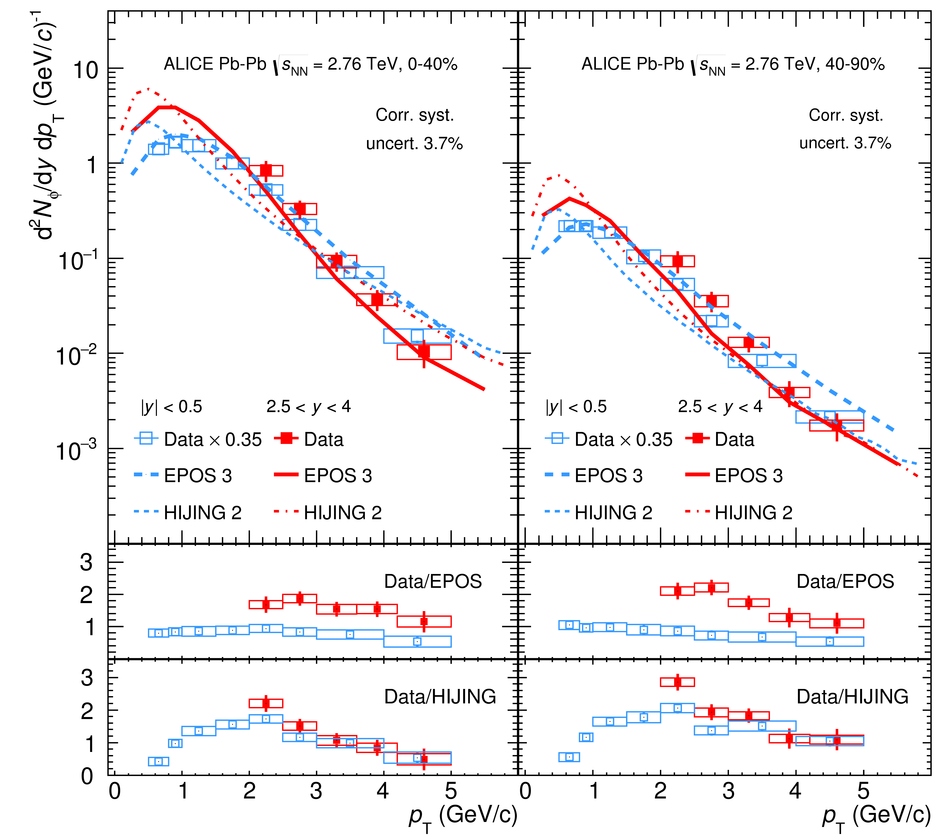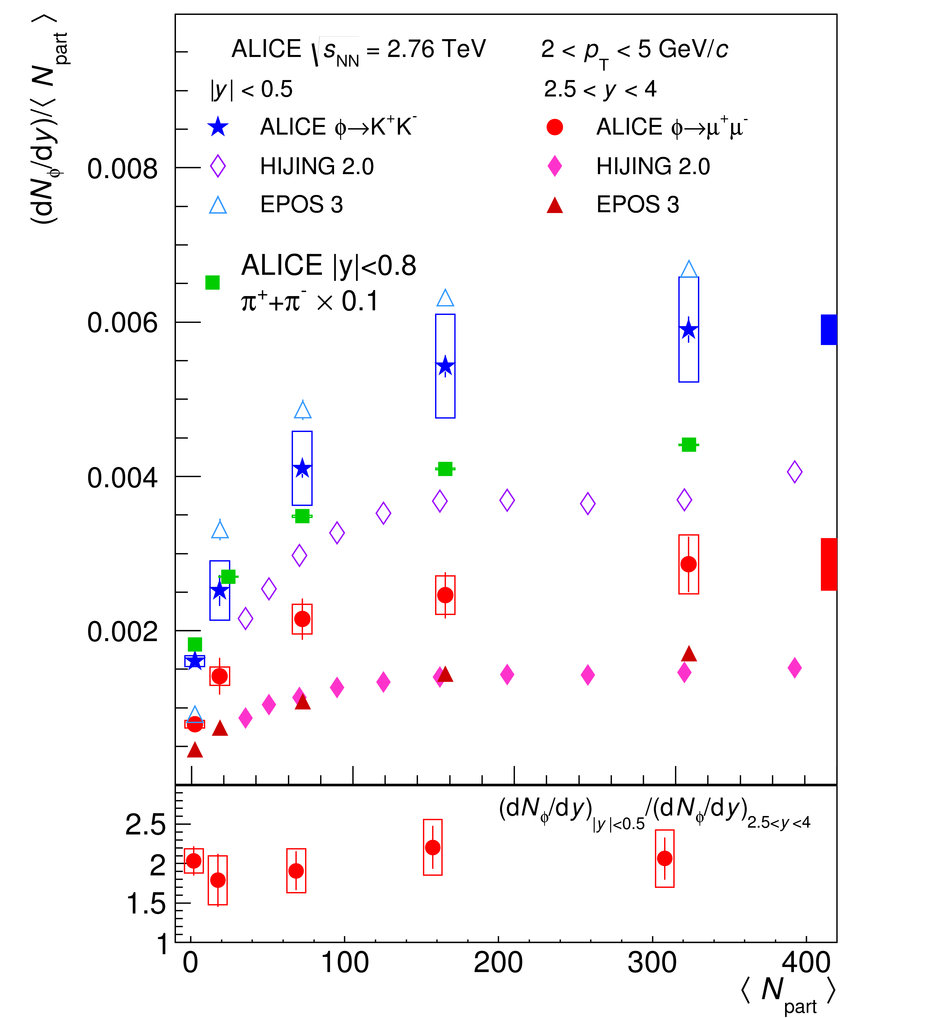$\phi$ meson measurements provide insight into strangeness production, which is one of the key observables for the hot medium formed in high-energy heavy-ion collisions. ALICE measured $\phi$ production through its decay in muon pairs in Pb-Pb collisions at $\sqrt{s_\mathrm{NN}}$ = 2.76 TeV in the intermediate transverse momentum range $2 <~ p_{\rm T} <~ 5$ GeV/$c$ and in the rapidity interval $2.5<~y<~4$. The $\phi$ yield was measured as a function of the transverse momentum and collision centrality. The nuclear modification factor was obtained as a function of the average number of participating nucleons. Results were compared with the ones obtained via the kaon decay channel in the same $p_{\rm T}$ range at midrapidity. The values of the nuclear modification factor in the two rapidity regions are in agreement within uncertainties.
Eur. Phys. J. C 78 (2018) 559
HEP Data
e-Print: arXiv:1804.08906 | PDF | inSPIRE
CERN-EP-2018-082

